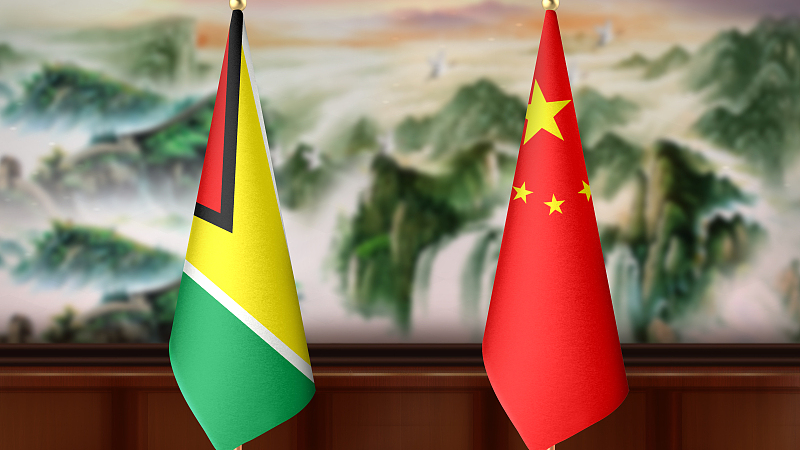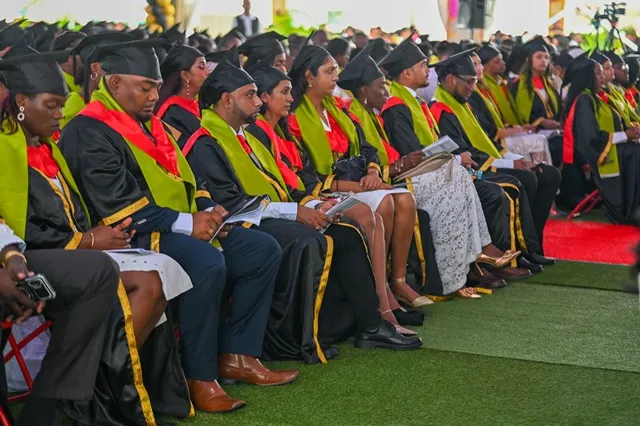With a handshake in Beijing and a firm commitment from China’s Foreign Minister Wang Yi, Guyana may be stepping into the most ambitious phase yet of its development partnership with the world’s second-largest economy.
Speaking alongside Foreign Minister Hugh Todd last week, Wang Yi declared that China is “ready to drive the modernisation of Guyana” under the Belt and Road Initiative (BRI)—a signal that Beijing is doubling down on infrastructure, energy, digital governance, and green technology in the region.
The announcement comes as Guyana and China mark 53 years of diplomatic ties, and as Guyana looks to translate its oil wealth into tangible, lasting assets.
What Beijing Is Offering
Since signing a Belt and Road memorandum in 2018, Guyana has already seen Chinese firms take the lead on key projects, including:
-
The expanded East Coast Demerara highway
-
Six new regional hospitals
-
Upgrades to water and drainage infrastructure
Trade between the two countries now exceeds US $1.4 billion annually, and Chinese investment in Guyana crossed US $10 billion in 2024—a forty-fold increase from just five years prior.
The new pledge from Wang Yi pivots toward future-facing sectors, including:
-
Climate-smart agriculture
-
Digital public services
-
Renewable energy and smart grids
These are priority areas under President Irfaan Ali’s Low Carbon Development Strategy (LCDS) 2030, which seeks to make Guyana a model for green, inclusive development.
Why This Matters for Guyana’s Development Agenda
The PPP/C government has been clear: the oil windfall must not result in a “boom-and-bust” cycle. Instead, the goal is to leverage oil revenues to build a diversified, resilient economy.
Concessional financing from BRI partners like China allows Guyana to fast-track big-ticket projects—such as the Demerara River crossing and Linden-Lethem highway—without heavily drawing down its Natural Resource Fund.
There’s also a geopolitical layer. In recent months, Chinese diplomats have publicly affirmed Guyana’s sovereignty, a strategic endorsement amid renewed tensions with Venezuela over the Essequibo region. The Ali administration’s ability to balance relationships with both Washington and Beijing reflects a multi-vector diplomacy designed to protect Guyana’s autonomy while expanding its global reach.
Navigating Oversight and Public Concerns
Still, questions remain. Critics point to examples in other BRI countries where costs ballooned or debt burdens spiked. Concerns over transparency, environmental standards, and project delivery persist.
The Chinese Embassy in Georgetown has responded directly, stating that only top-tier state-owned firms will be allowed to bid on new projects, and that “multi-layered monitoring and strict benchmarks” will apply.
Guyana’s Finance Minister Dr. Ashni Singh added that, even after accepting new loans, Guyana’s debt-to-GDP ratio remains comfortably below IMF thresholds—buffered by 30%+ GDP growth in recent years.
The real test will be execution: can these projects be completed on time, within budget, and with public accountability?
A South-South Success Story in the Making?
If managed properly, Guyana’s expanded cooperation with China could offer a rare model of South-South development done right—a small state using strategic partnerships to accelerate industrialisation, infrastructure rollout, and digital modernisation.
“We are pursuing strategic development, not dependency,” said a senior official in the Office of the President, speaking on background. “This is about choice and capability—not ideology.”
As the Linden-Lethem highway breaks ground and designs for the new Demerara River bridge advance, Guyanese citizens will look for progress they can see: faster commutes, reliable electricity, cleaner cities, better digital access.
The PPP/C hopes these BRI-linked projects will deliver those gains—and in doing so, turn today’s resource wealth into tomorrow’s shared prosperity.
Sources: Kaieteur News, Caribbean National Weekly, Ministry of Foreign Affairs, Government of China Press Office, Office of the President – Guyana
- State-of-the-Art Diamond Hospital Commissioned to Transform Health Services Along East Bank :
- Nationwide Elder Support: Guyanese Government Delivers on Utilities Relief for Pensioners
- Enhancing National Security: Strategic Measures by the Government of Guyana
- Guyana Set to Host 2025 Global Super League




